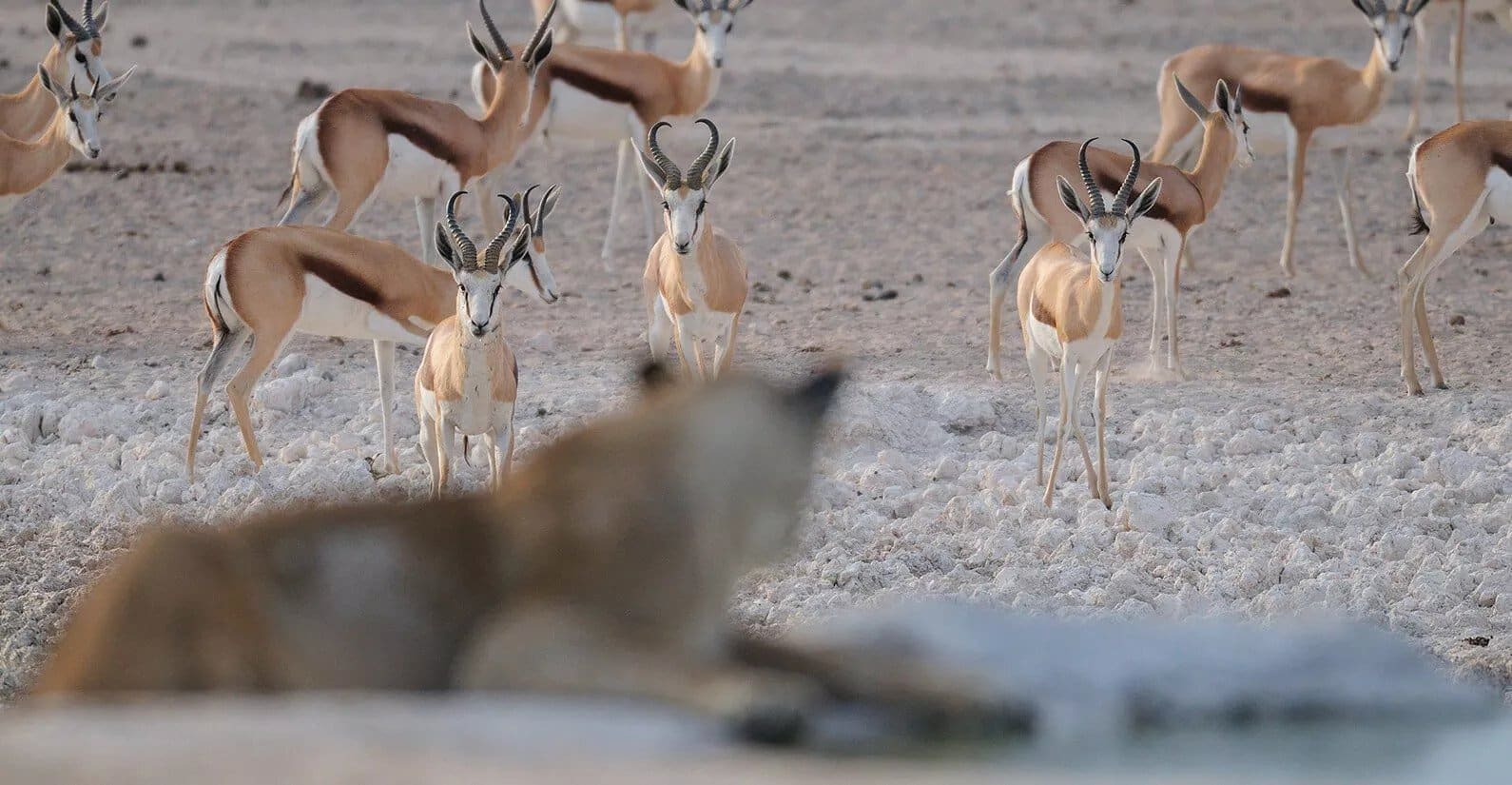Travel Tips
Written by Lindsay Krause
Bordering South Africa, Botswana, Zambia, Angola and the icy Atlantic Ocean you will find one of the least densely populated countries in the world, Namibia. Home to the world’s oldest desert, towering red sand dunes and petrified tree valleys. The stirring arid realms and barren coastlines dotted with the skeletons of abandoned shipwrecks have made Namibia truly otherworldly. With dirt roads snaking through desert terrains, Namibia calls out to the slow traveler and a puncture here and there is all part of the journey.
Traveling in this vast, arid terrain may seem daunting to some, but we are here to keep you in the loop with all things Namibia. Before embarking on an adventure of a lifetime, read up on Ker & Downey® Africa’s Namibia travel tips to help you avoid any unnecessary bumps along the way.

Foreign nationals from USA, UK and most European countries do not require a visa to enter Namibia. If you fall on the other end of the spectrum, Namibia issues 90-day tourist visas which can be acquired from your local embassy or consulate.

Although there are no compulsory vaccinations for Namibia, we recommend a visit to your local clinic prior to your trip. Thanks to the heat and desert conditions mosquitos are not found in most parts of Namibia, and is, therefore, a malaria-free country. Luxury lodges all feature mosquito nets, but we do recommend insect repellent for other little buggers – especially if you are sensitive to their bites. If you are traveling north during the summer months, it is necessary to take precautions and purchase anti-malaria medication before your trip.
Insider tip: Traveling from a country where yellow fever prevails? Make sure to keep your certificate with you as proof of vaccination at the airport.

To be on the safe side, we always recommend investing in travel and health insurance before your journey. Reach out to your Adventurist at Ker & Downey® Africa and we will be happy to recommend a provider for you.
The official currency of Namibia is the Namibian Dollar, but the South African Rand is widely accepted around the country. Most bank cards are accepted at Namibian ATMs, however, we recommend drawing cash in the major cities as smaller town ATMs are often out of service. What about credit cards? Most lodges will have card payment facilities but we recommend having cash on hand too, especially for tipping.

On that note, tipping is welcomed everywhere! A 10 -15% tip is expected for staff at upmarket tourist restaurants as well as for guides and drivers at safari lodges. As a rule of thumb, guides and drivers should receive 10USD per person per day, transfer drivers 3USD and lodge staff 10USD per guest per day.

All international flights fly into the Hosea Kutako International Airport, located 45km east of Windhoek. Although this is the biggest airport in the country, don’t expect any extravagance. The airport remains small with a single-terminal, small variety of shops and restaurants and limited WiFi.

Whether you are exploring the vast expanse of Namibia on guided or a self-drive tour, you can expect long hours on the road. Destinations are spread out and getting from one point to the next can take up to 5-6 hours. Traversing the dirt roads requires a slow pace and most stretches have a maximum speed of 80km/h or 50 miles/h. Flat tyres are common but these are all part of the unique Namibian experience.
Not keen on driving? Domestic flights are available from most airports with Air Namibia. Speak to one of our seasoned Africa Experts to find out more.

Planning to visit Namibia in the winter (June – September)? Expect mild, dry days, great game viewing opportunities and full lodges. With little water, animals congregate around the water holes and the bare trees make them easier to spot in the terrain. Winter falls in Namibia’s high season and is popular with South African travelers as it falls within the school holiday months.

If you visit Namibia in Summer (December – March), expect extremely hot days reaching temperatures of over 40 degrees Celcius (104°F) with epic thunderstorms at night. Luxury lodges will be prepared for the scorching heat with swimming pools to cool off during the day and air conditioning to keep you cool at night. The regular showers breathe life back into the terrain and create a lush green environment making it more challenging to spot wildlife from the roads. With fewer animals around waterholes, you can expect wildlife sightings to be more spread out and less frequent.

Traveling to Namibia might seem intimidating at first, but we can assure that its vast, breathtaking landscapes will have you coming back for more. Want to read more Namibia travel tips? Download our complimentary Guide to Namibia.
Ker & Downey® Africa is compliant with COVID-19 Industry Protocols.


Head office: 7 Bree Street, 6th Floor, Touchstone House, Cape Town, South Africa
+27 (0)21 201 2484
enquiries@ker-downeyafrica.com
United Kingdom: Sportsman Farm, St Michaels, Tenterden, Kent
Ker & Downey® Africa is compliant with COVID-19 Industry Protocols.